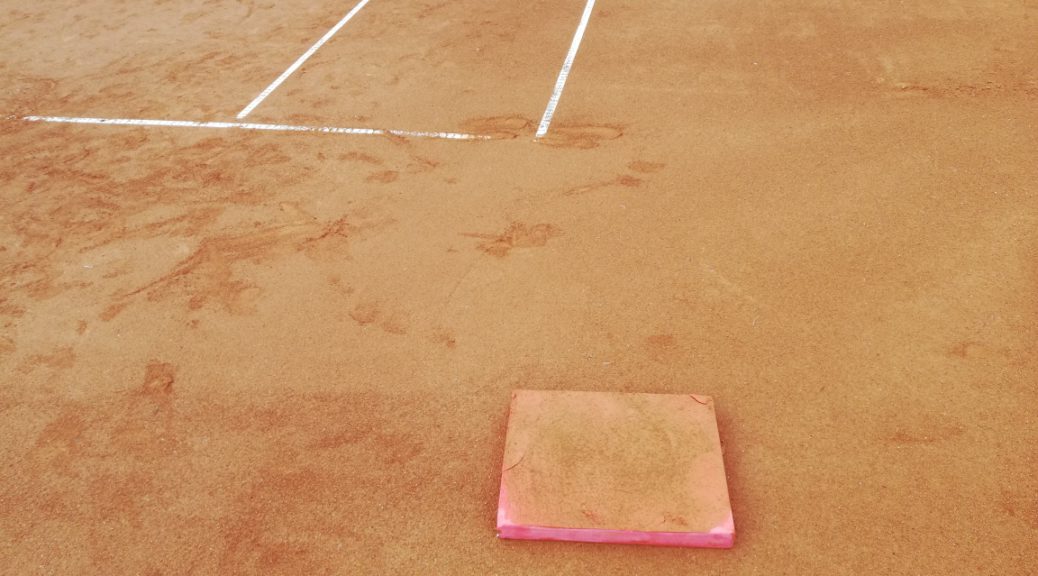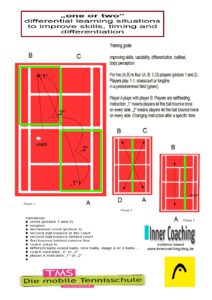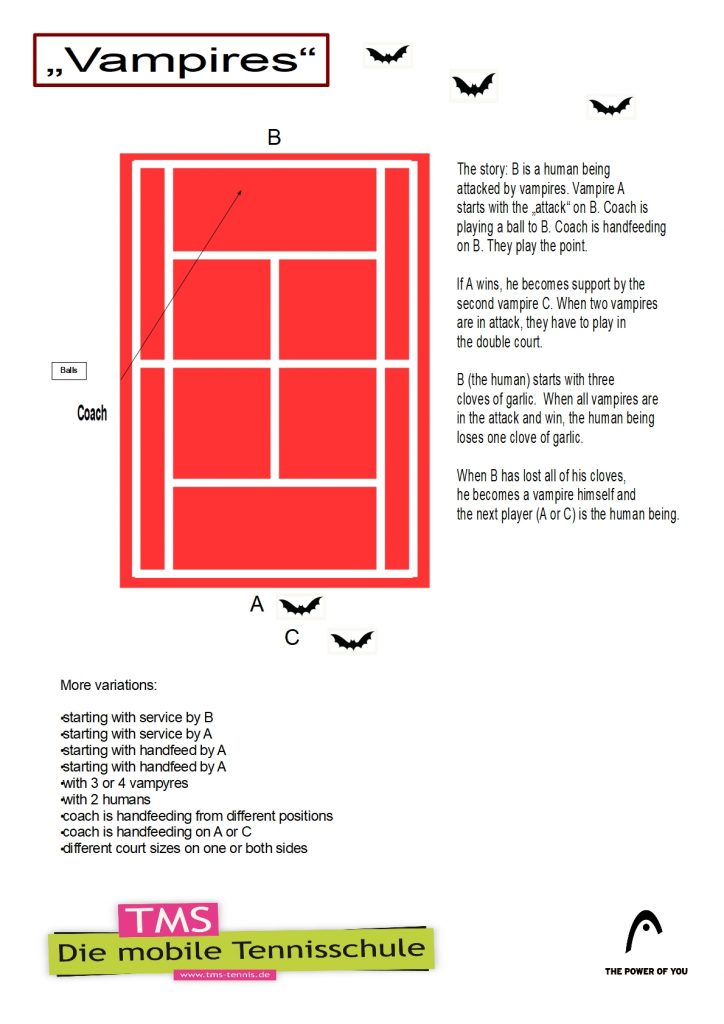
Schlagwort-Archive: differential learning
1-hour-differential
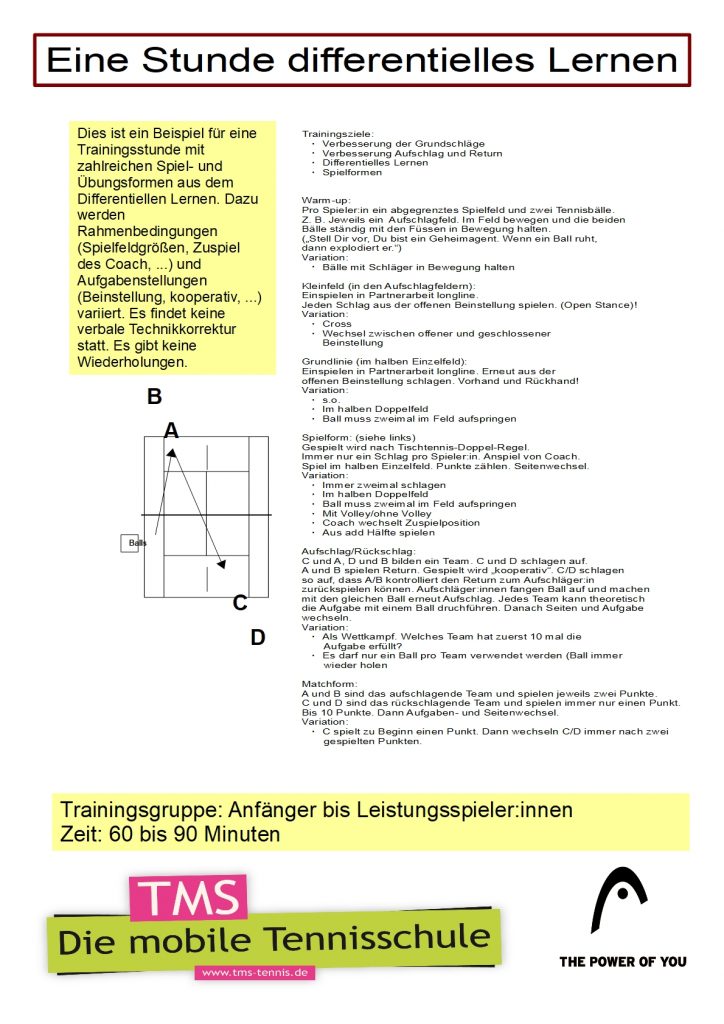
„Evidence based coaching“ bedeutet im Tennistraining, sich von einem „methodischen Traditionalismus“ mit explizitem lehrerzentriertem Techniktraining zu verabschieden. Differenzielles und spielerisches Lernen sind effektiver und machen auch mehr Spaß. Hier ein Beispiel für eine Trainingsstunde mit deutlichem Schwerpunkt auf differenziellem Lernen. Ohne explizite Technikanleitung und mit vielen Variationsmöglichkeiten.
Differenzielles Lernen im Tennistraining
Coach the coach ist eine kollegiale Weiterbildung in der Tennisschule TMS. In der letzten Veranstaltung am 1. März 2020 ging es unter anderem auch um das differenzielle Lernen im Tennistraining. Vorgestellt wurde es von TMS Coach Frercks Hartwig.
Weitere Themen des Treffens:
Street Racket, Trainingsentwicklung mit der Bank, Trainingsformen zur Verbesserung von Beinarbeit, Laufwegen und Kondition.
Constraints or should we…
find another word to describe what we do in our exercises in tennis? I think, that the way of differential learning (DL) is a better way for learners and players to develop technique and tactics in a sport like tennis. Still tennis coaching is dominated by methodical traditionalism and explicit learning.
Wolfgang Schöllhorn, scientist at Johannes-Gutenberg-University at Mainz, after long research about motor learning, has written an nice article about the history of nonlinear pedagogy und the constraints led approach (CLA). And why they are different to DL.
In this blog I use nonlinear pedagogy and CLA very often. They are following systemic theory and implicit learning. Making this real on courts, would be a milestone. But Schöllhorn has researched about motor learning and discovered, that there is a more effectiv way to learn. He called this Differential Learning (DL). In this article from 2019 he describes, why CLA is still dominated by the idea of leading the learner and that the coaches goal is still to bring him to a nonautonomous goal.
I think, Schöllhorn is right. This means in consequence: I have to overthink the terms I use to describe what my players do in trainings. Constraints can be understood as a term for changing courtsize, material, partners, tasks, emotions,…. but not from a pedagogical view and in distinction to CLA.
Effects of complex movements on the brain as a result of increased decision-making
Constraints and Differential learning, some keys

ask for feedback
be patient
create a level of instability
don’t talk too much – concentration is silent
explicit coaching leads to breakdown under pressure
freedom to create
give back autonomy to the athlete
human systems theory
implicit coaching improves problem solving and decision making
kill, no, don’t kill creativity by setting clear textbook structures
love your stuff
minimal constraint means maximal influence
Change rules – a double drill
Playing the game with rules outside the rules brings players in a situation where they have to solve problems outside the manifested behaviour. We can manipulate court size, rules, time, counting, context of the game and other settings surrounding the game. This improves tactics and skills. In this double drill players have to adapt the direction of the service, the return in a double, the netplay and particularly in the teamwork collusion between server and netplayer.
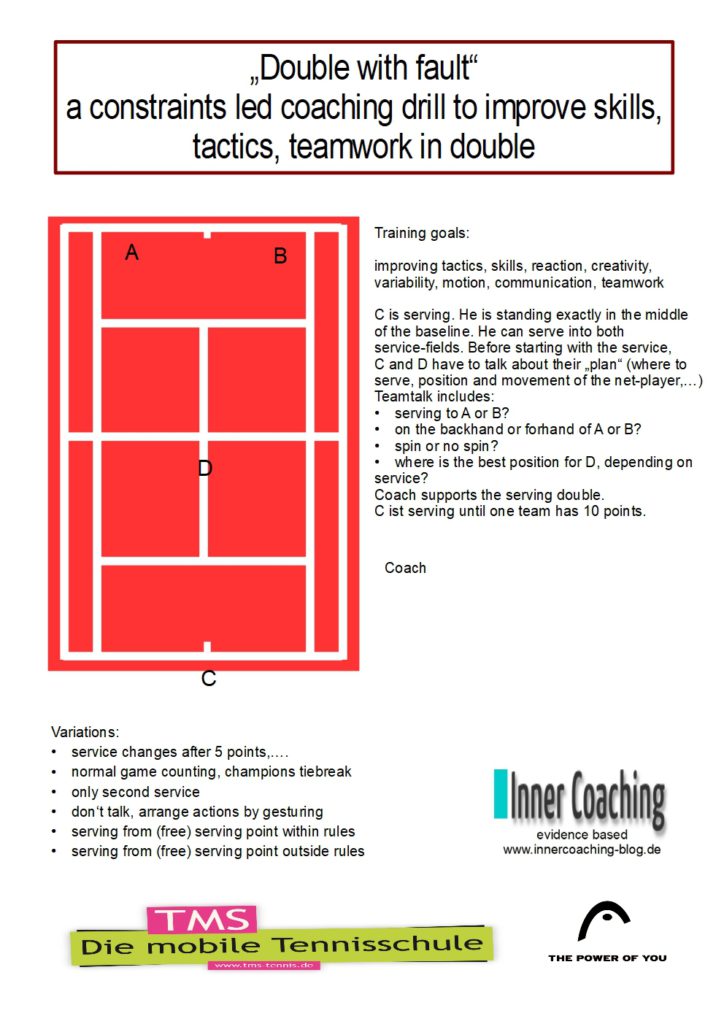
CLA is not DL, but….
This is from Nick Jacques Tennis. Nice ideas for a constraints led approach (CLA). This already shows the difference between CLA and differential learning (DL). In the CLA the intention and the plan for the development of the skills is an idea of the coach („avoiding backswing“). In a DL approach the coach also offers different situations (like those in this video). But the solution is in the responsibility of the player, not in the responsibility of the coach!
Both approaches are implicit, but there is an important difference in the attitude to the learning athlet. While the coach in the CLA drill has a goal (backswing), the DL coach knows and intends nothing. The system „player“ is a black box and there is no expectation in the long term development of individual skills. The examples in Nicks CLA are in DL only one possible solution for the motion and will not be repeated.
Thx to Nick for the nice ideas ?. I love his quote: „I have no influence over this as I am still with very little noise from me.“
“ 3 constraint led approach drills that have helped reduce the size of my students take back. Lillian has previously been taught a large loop on her take back which has isolated her upper body from her lower body, making it very hard for her to adapt to the many different balls she would need to cope with in a match situation. Lillian has made great improvements on her coordination, here are a few key exercises that have helped her progress. Note how Lillian is intrinsically motivated as the exercises engages her and draws out the effort, you can see I have no influence over this as I am still with very little noise from me ? „
Differential learning and proprioception
Differential learning (DL) and developing of grundstrokes by changing variations. Player starts from balance pad with fast steps on pad. The coach feeds balls out of the basket. Player plays the ball with the forehand crosscourt.
The essential of DL is to varify tasks and situations. One situation is only used in one training, In the next one, we set new .
Variations:
- hanging the position of the pad
- different tasks on the pad (on one leg, with the back to the coach, standing sidewards,…)
- changing the position of the pad
- changing ballfeed (in the video the coach throws the ball over (!) the baseline
- changing target (longline, cross, long, short, with spin, small target, finishing the point with an opponent,…)
- different pads
This drill additionally develops the proprioceptive awareness.
Constraints – your ideas?
In einem Facebook-Post habe ich nach Ideen für den abgebildeten Aufbau gefragt. Hier nun die Beschreibung meiner Idee:
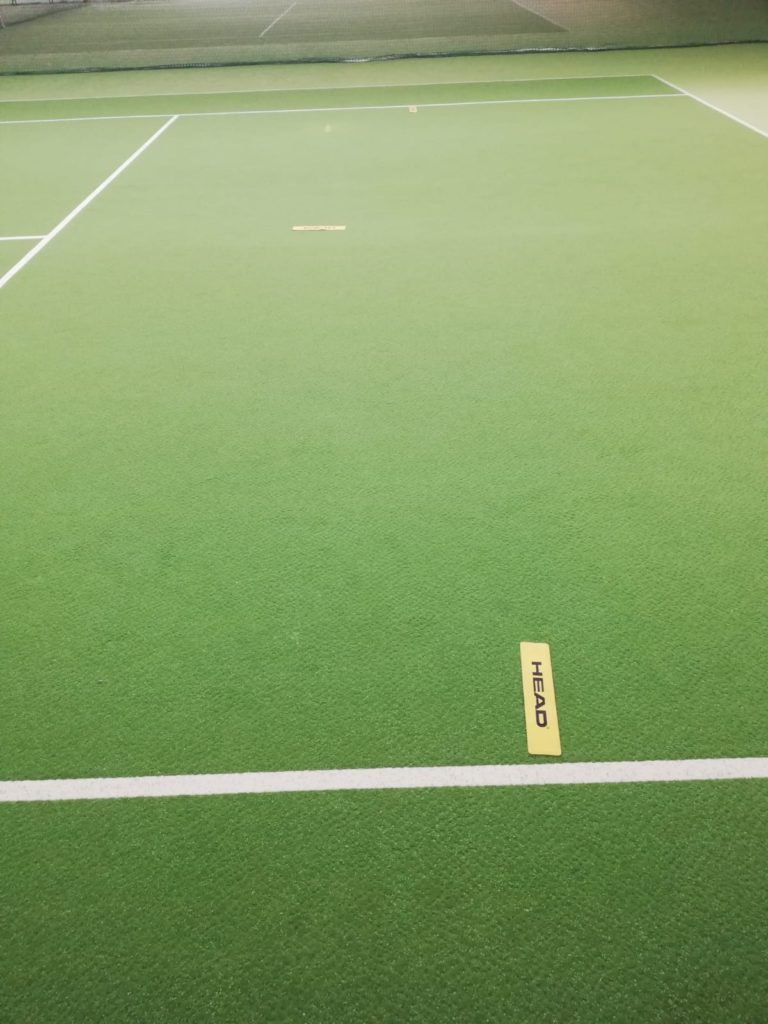
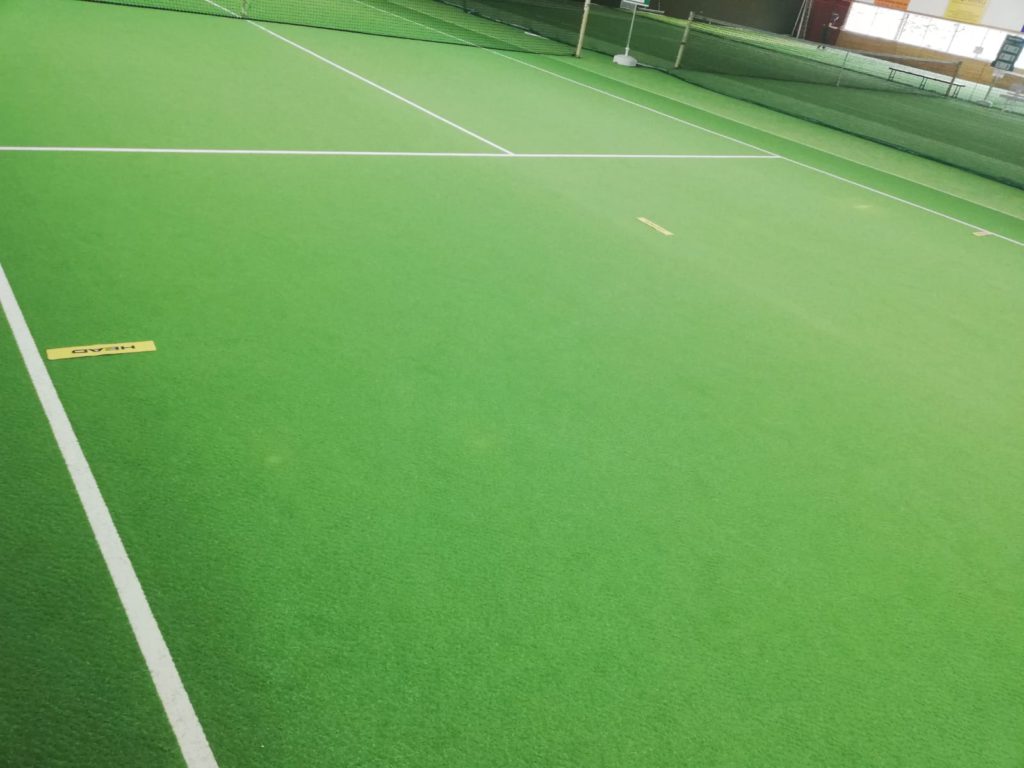
Auflösung: In diesem Beispiel für differenzielles Lernen (Taktik- UND Technikentwicklung) durch veränderte Rahmenbedingungen war die Aufgabe folgende:
vorgezogener Aufschlag von der Midcourt-Linie (gelbe Linie quer), danach Punkt ausspielen.
Variationen:
- Punkt im Einzelfeld ausspielen;
- Punkt im 1/2 Einzelfeld gerade;
- Punkt im 1/2 Einzelfeld diagonal (gelbe Linie in der Mitte);
- Punkt im 1/2 Doppelfeld;
- nur 1 Aufschlag;
- unterschiedliche Bälle;
- nur Vorhand;
- 2. Ball muss Volley gespielt werden; ….
One or Two
Another practice example for differential learning. The instruction that players have to let the ball „once“ or „twice“ changes the perception and provokes a wider range of speed and distance. Following the instructions means to varify racketspeed and technique.
We practice one of the described drills only once or twice in a trainingseason. In the following training sessions we play at best variations (repetition without repetition!).
